FSK (Frequency Shift Keying):
Abstract:
As the name implies, FSK transmits data by keying bits through changes in frequency, it typically does so by switching between different oscillators based on the bit transmitted. Then on the demodulation it passes it through two filters and runs a simple envelope detection to detect bit changes. Finally a comparator compares the two, typically with something simple as
note: Synchronistity of Detection for Receivers
Pros and Cons:
Typically FSK is more resistant to AWGN due to the decision being based on a comparison of the two frequencies which are both affected by the noise, rather than a single signal.
Diagrams:
Modulator:
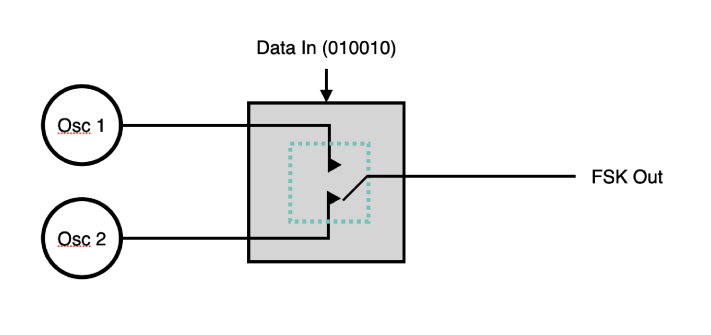
Demodulator:
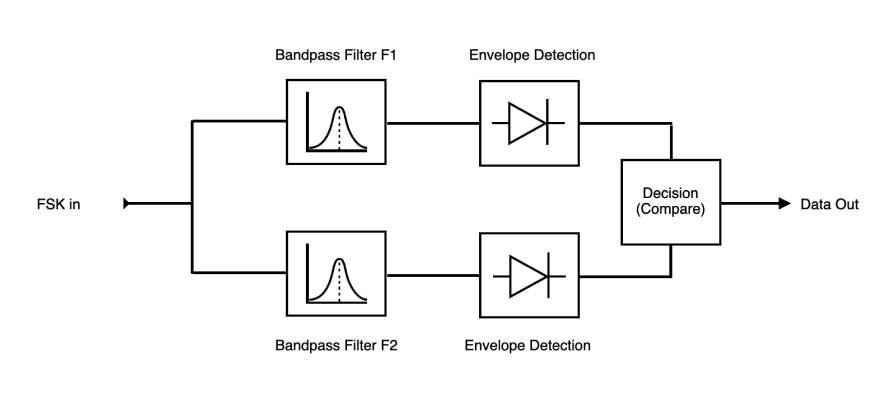
PSK (Binary Phase Shift Key)
Abstract:
This type of modulation works in a similar way to that of FSK, but in this case the carrier frequency is just phase delayed by π on one of the bits of information.
We demodulate by using sine and cosine LOs, which gives us two “arms”, In Phase () and Quadrature ()
Now in the case of PSK, since both our data points are located along the axis, and both have , we don’t actually get meaningful data from our Q axis, however this arm will become more important for QPSK
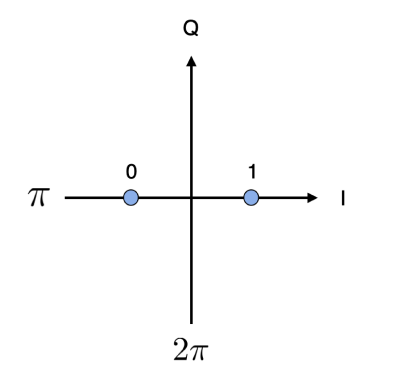
Modulation:
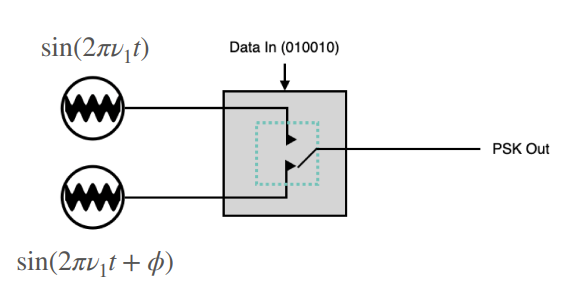
Demodulation:
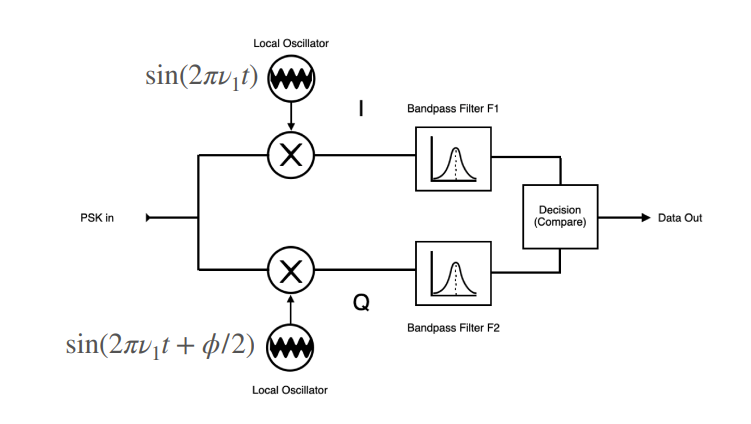
QPSK (Quadrature Phase Shift Key):
Abstract:
As implied by the name, this is the same as PSK, but now with the Quadrature axis being utilized, essentially giving us binary options on both the axis as well as the axis, giving 4 bit options, or 2 bits per symbol

Modulation:

Demodulation:
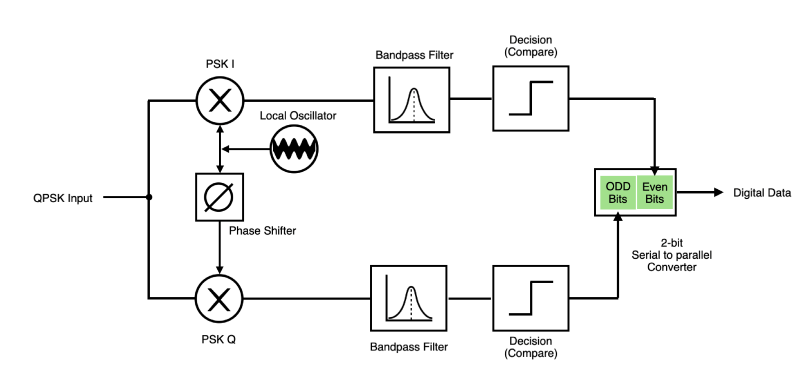
Extra Note:
We are not limited to 4QPSK, we can also do 8QPSK, however this system is much more limited by noise and we tend to opt for other schemes like :
Ex:
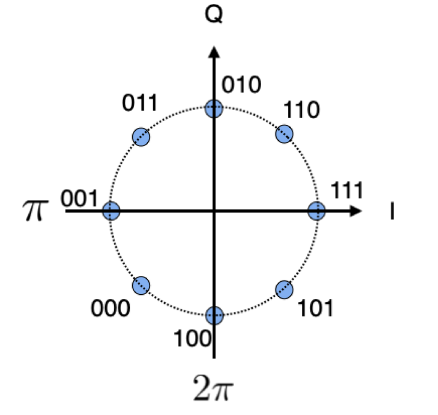
QAM (Quadrature Amplitude Modulation):
With a very similar transceiver design to QPSK, QAM use IQ modulation to transmit more bits of data per symbol, opting instead of a circle, a matrix of points with spacing for data transmission, making it less error prone, as well as more data efficient, a good example is 16QAM:
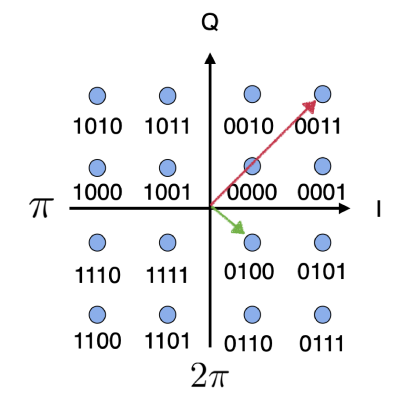 As you can see here:
As you can see here:
- we get
- we get
- we get
- we get
IQ Modulation (General):
This takes the general form:
Where the green section is the and the red section is the In general:
- we can isolate the term by multiplying by a cosine LO. This leaves us with from which we filter the time varying frequency leaving us with just
- we can isolate the term by multiplying by a sine LO. This leaves us with from which we filter the time varying frequency leaving us with just Therefore once our two arms have passed through local oscillators, we get